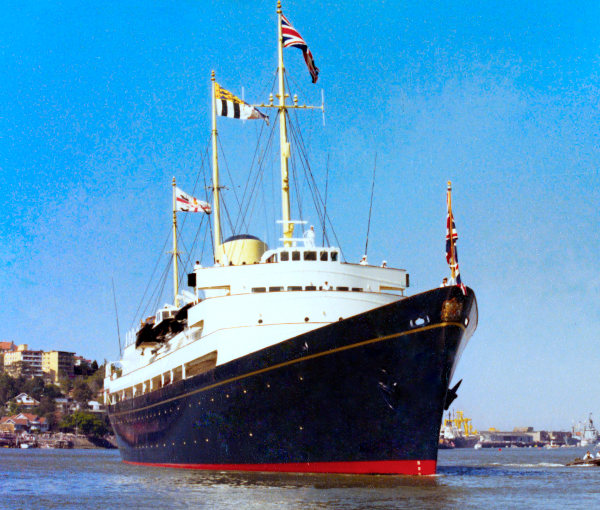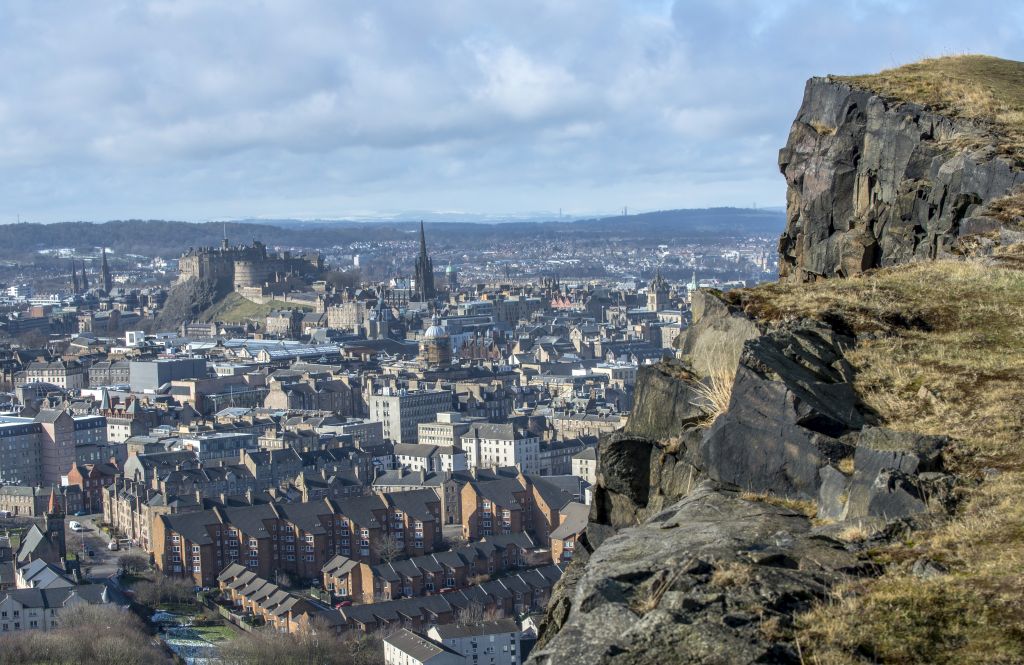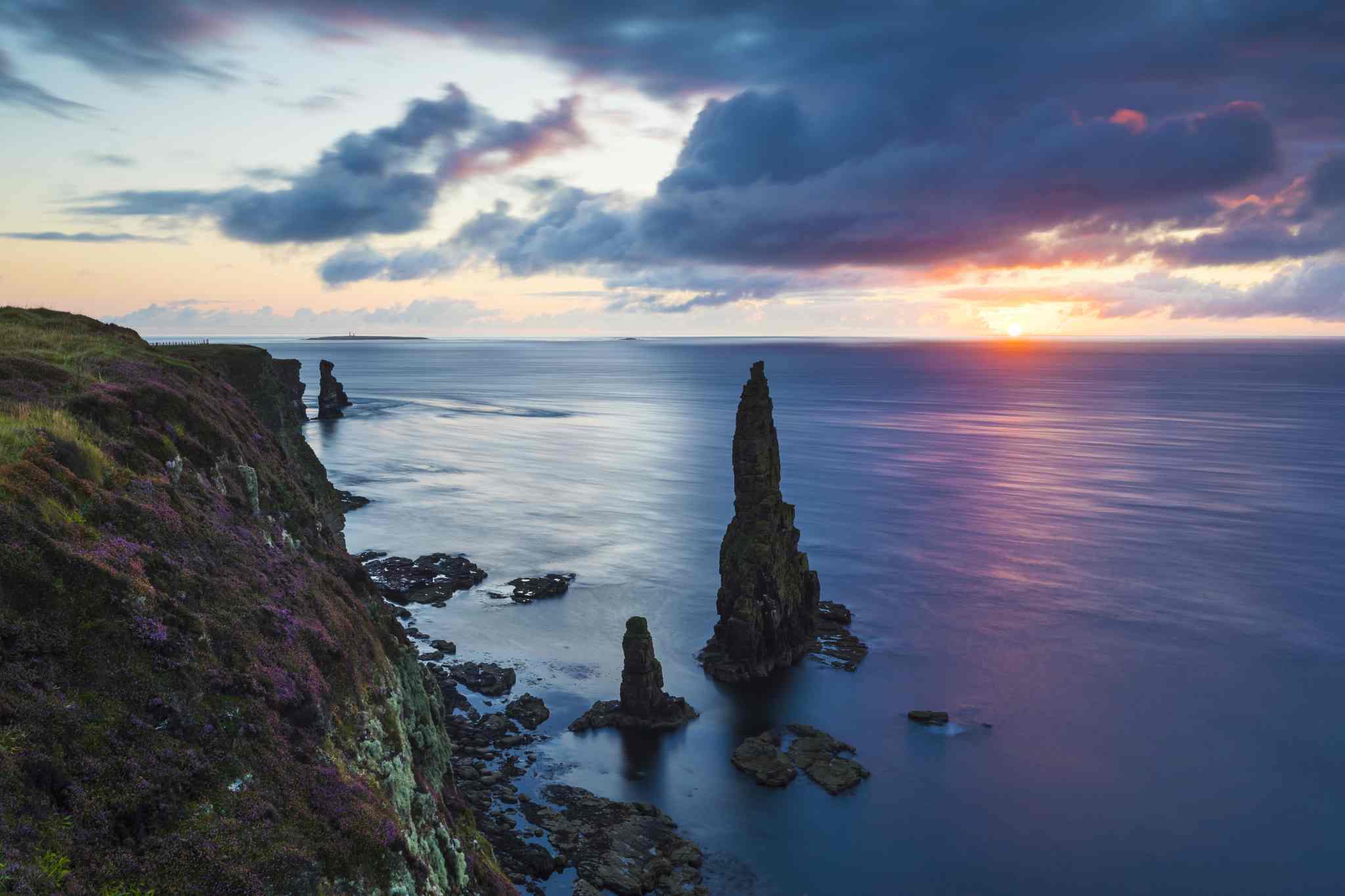Edinburgh Fringe Festival

The Edinburgh Festival Fringe is the world’s largest arts festival, which in 2018 spanned 25 days and featured more than 55,000 performances of 3,548 different shows in 317 venues. Like our annual conference, it was hit hard by travel restrictions with COVID and stayed mostly digital over the last two years, so it was great to have people flocking the city center again this summer. We are looking forward to seeing porous media people exploring Edinburgh at InterPore 2023.
The Royal Yacht Britannia

(photo: Queensland State Archives, CC-BY 2.0)
Edinburgh is home to the Royal Yacht Britannia. The three-mast, 412-foot-long yacht was the British Monarchy’s vessel from 1953, when she was launched by Queen Elizabeth II, until her decommission in 1997. During her 43-year career, she conveyed the Queen and other members of the Royal family on more than 900 visits and travelled more than a million nautical miles around the world. It is said that Her Majesty shed a tear at the decommissioning ceremony that was attended by most of the senior members of the Royal Family.
Britannia is now a visitor attraction moored in the historic port of Leith in Edinburgh, explored by more than 300,000 people every year. The visit across her five decks will take you past the crewmen quarters and the Royal Apartments, while the numerous rare items and photographs on display will give you an exclusive look into the Royal family and Royal Yachtsmen (Yotties) lives when at sea. A must on your to-do list when you come visit Edinburgh next year.
Marathon Festival

Fancy to stay a few days longer and run off the extra conference calories from catching up with your InterPore friends over breakfast, lunch and dinner? Edinburgh is home to the Edinburgh Marathon Festival. In 2023 it will take place 27/28 May right after our annual meeting and include distances from 5 to 42.2 km. After the London Marathon it is one of the most popular marathons in the UK with more than 40,000 participants across all distances taking part in 2022.
Arthur’s Seat
Edinburgh is often said to have been built on seven hills in an allusion to Rome, although it’s not hard to come up with a few more if you know the city well. The highest of them all is known as Arthur’s Seat, an ancient volcano that erupted 350 million years ago. Although it is sometimes said that its name derived from the legend of King Arthur, it is more likely coming from the Gaelic Àrd-na-Said, meaning height of arrows. It’s a short, slightly strenuous hike to the highest point (251 m), but absolutely worth it to look out over Edinburgh from this vantage point.
Royal Botanic Garden
Edinburgh is home to the Royal Botanic Garden, one of the finest botanic gardens in the world. Situated just one mile from the city center, the Garden offers fantastic views of the capital’s skyline, featuring Edinburgh Castle and the Scott Monument. It is famous for its Chinese Hillside, Rock Garden and Scottish Native Plants Collection, offering peace and tranquility to its 2 million visitors per year, free of charge.
Hogmanay
In Scotland, New Year’s Eve is called Hogmanay and the celebration has its origins in the wild Viking celebrations of the winter solstice. Hogmanay in Edinburgh is a unique event, celebrated with a street party, including a torchlight procession, a ceilidh (traditional Scottish music and dancing) and a spectacular firework display over the castle. If that isn’t enough, you can welcome in the new year with the Loony Dook, a bracing morning dunk in the river.
Royal Mile

Edinburgh’s Royal Mile is the heart of Scotland’s historic capital. Running through the city’s medieval Old Town, the Royal Mile connects the magnificent Edinburgh Castle, perched high on a base of volcanic rock, with the stunning Palace of Holyrood, resting in the shadow of Arthur’s Seat. The Royal Mile is overlooked by impressive, towering tenements, between which cobbled closes and narrow stairways interlock to create a secret underground world. Peppered with superb attractions such as the Real Mary King’s Close, St Gile’s Cathedral and the Scottish Storytelling Centre, historic sites including the ultra-modern Scottish Parliament and some of the best eating and drinking spots in the city, the Royal Mile offers much to see and do.
(Photo credit: Kim Traynor, modifications made to image)
Robert Burns

On the 25th of January each year, Scotland pays tribute to Robert Burns, one of the most celebrated poets in the world. Born in Ayrshire in 1759, Robert Burns is Scotland’s national bard. Affectionately known as ‘the Ploughman Poet’, his verses stand as a fitting testament to Scotland’s proud literary history. A Burns supper is an occasion to celebrate Scotland’s cultural heritage. The centrepiece of any good Burns Supper menu is the iconic haggis (a savoury pudding of sheep’s heart, liver and lungs) that is traditionally piped in, i.e. brought in with a chorus of Scottish bagpipes, and then seranaded with a recital of Address to a Haggis. The supper is rounded up with a glass of single malt Scottish Whisky and a series of toasts, including an Address to the Lassies and Reply to the Laddies; a few steps of Ceilidh dance, a type of Gaelic folk dance, and finally everyone joins hands to sing Auld Lang Syne before going their separate ways.
Scotch Whisky Experience
In the heart of Edinburgh’s old town, at the top of the Royal Mile and in the shadow of Edinburgh’s castle, the Scotch Whisky Experience’s tours offer the possibilities for experts and novices alike to discover the joy of one of the most prominent Scottish industries. Take a sensational journey through a replica distillery, explore Scotland’s diverse whisky regions and the flavours that the countryside imparts to its whiskies, experience for yourself the varying aromas and whether you like fruity, sweet, or smoky flavours, before your expert guide imparts the secrets of the Whisky regions and helps you choose your perfect ‘dram’ to taste in one of the largest whisky collections in the world.
Dynamic Earth

Situated at the foot of Edinburgh’s spectacular Salisbury Crags, Dynamic Earth invites you to take a journey through time to witness the story of planet Earth. You’ll be embarking on the interactive adventure of a lifetime – the lifetime of our planet! It’s a chance to experience the primeval forces of nature as they shaped our planet and go on a 4D adventure around the world. Travel back to the beginning of time in the Deep Time Machine, plunge into the ocean depths in a yellow submarine, fly high above ice-cold glaciers and marvel at their power as they carve out entire continents. Dynamic Earth is also home to one of Scotland’s only fully digital, state-of-the-art 360° Planetariums, with a wide variety of live presenter-led shows and films showing throughout the year. Whether you want to learn or play, Dynamic Earth will satisfy kids and scientists alike.
The Three Bridges

Sweeping over the Firth of Forth, the three Forth bridges span three centuries and connect Scotland’s capital to the Fife region directly to its north. The Forth Rail Bridge was built in 1890 in the wake of the Tay Bridge disaster and was designed to project strength and stability to the travelling Victorians. A designated UNESCO World Heritage Site, it is one of the most recognizable structures in the world and is famous for taking so long to paint that once you have finished one end you have to start again. Although, its restoration gave it a new longer-lasting paint job – still in the same iconic red color. Built in 1964, the Forth Road Bridge was the longest outside the United States at the time, constructed to accommodate the rising number of private cars. The bracing between the tower in the shape of St Andrews Cross adds to its stylish appearance. A new road bridge was built in 2017 as part of a major road upgrade to accommodate modern traffic volumes. Known as the Queensferry Crossing, it is currently the longest three-tower, cable-stayed bridge in the world. The Forth Road Bridge is now open to cyclists, pedestrians and buses. The stunning panorama that the three bridges offer is well worth the short journey from Edinburgh to the quaint waterside village of South Queensferry (30 minutes by train).
The New Lanark and the Falls of Clyde

Situated 30 miles south-west of Edinburgh, New Lanard is one of Scotland’s 6 UNESCO World Heritage Sites. Founded in 1785 with a focus on education and welfare of the mill workers, New Lanark became a model for industrial communities that was to spread across the world in the 19th and 20th centuries. The heart of New Lanark is a living and working village which welcome visitors from all over the world. Learn and explore the 18th century cotton-spinning village with historical buildings including the first workplace nursery school in the world. New Lanark is also the gateway to the majestic Falls of Clyde where you will find a woodland walk through breathtaking scenery, stunning waterfalls and the Clyde Walkway. Look out for wildlife, and you may catch a glimpse of kingfishers, otters, deer and maybe walk in the footsteps of William Wallace himself.







